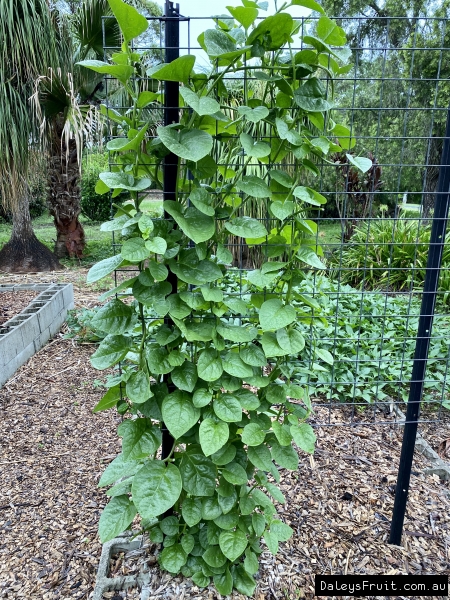Malabar Spinach - Green
Basella alba$4.90
When will it be in Stock?
We previously had the most to buy in Nov and Dec. With limited quantities for sale in other months. They are unlikely to be available in Feb and Mar. Remember to click above to get notified when it is available once more.
Specifications of Malabar Spinach - Green
Preferred Climate Subtropical, Warm TemperateLearn About Climate Zones
Grown From SeedlingLearn About Propagation Methods
Max Height (when in the ground with good conditions) 0-1m
Plants required to Pollinate 1 (Self Pollinating)Learn about Pollination
Can it Handle Frosts? Sometimes
Amount of leaves in Winter? All Leaves (Evergreen)
Quarantine Restrictions to these Areas WA
Fruiting/Harvest Months February, March, April, May, June, July, August, September, October, November, December
Create a Filter to find similar plants
Customers also bought
These plants are often purchased together. Also check plant information for suitability in your orchard.
Dwarf Avocado - Pinkerton (A)
$79.00 ($54.00-$79.00 choose a size)
Indian Almond Tree
$39.00 ($29.00-$39.00 choose a size)
Betel Leaf
$19.90 ($14.75-$19.90 choose a size)
Custard Apple - Golden Emperor
$89.00 ($89.00-$99.00 choose a size)
Dwarf Coconut Malay Bronze
$69.00 ($69.00-$89.00 choose a size)
Pecan - Shoshonii (B) SP
$39.00 ($29.00-$49.00 choose a size)
Customer Tips & Reviews Malabar Spinach - Green
Perth, WA
Malabar Spinach - Green
Grows really well in late spring and summer, very easy to grow, just put it next to something to grow on and watch it go. To me it doesn't taste like regular spinach, similar but.. a little different I guess.
MT WAVERLEY, VIC, Australia
This plant is the best performing out of the others, I had started some from seed and some from cuttings. In the tropics these are perennials but here in Melbourne the are treated as annuals. The plant in the photo is my best performing and is 3 months...
Malabar Spinach - Green
My ducks LOVE this green. I grow it in a large tub and keep it covered with chicken wire so only the leaves stick out as they grow, that way the plant can keep continuing to grow and feed everyone. Has a slight mucilaginous texture but nice to eat.

























